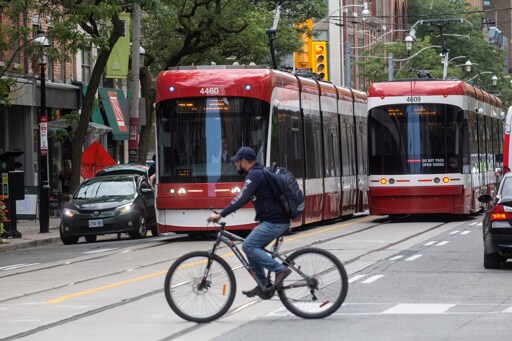Teams of fare inspectors in plain clothes began patrolling the transit system and issuing tickets on Wednesday as part of the TTC’s efforts to reduce the estimated $140 million lost to fare evasion each year.
All plain clothes inspectors are carrying ID and are equipped with body-worn cameras to record customer interactions, the transit commission said in a release.
It added that inspectors will use discretion, whether in uniform or plain clothes, to ensure tickets are predominantly issued in cases of “willful evasion”.
Tickets for not paying for a bus, streetcar or subway ride range from $235 to $425 depending on the nature of the offence. That money goes to the courts, not directly to the transit service.
The transit service said the approach was previously tested in 2018 and re-introduced three weeks ago with plain-clothes inspectors “educating” those found to be riding illegally.
The move to now begin writing tickets is part of a pilot project that will be reevaluated in January, according to TTC media relations.
I’d like to know more about how they estimate financial losses due to fare evasion



How about…hiring staff at all gates, like they did back when I lived in Toronto. It’s been nearly 20 years, but I recall it being somewat difficult to get into a station, and only marginally easier to get on a streetcar or bus, without having paid a fare.
Or am I missing something?
How much far evasion do you think there actually is?
20 years ago the system had to support half the people it does today and it doesn’t look a hell of a lot different (Eglinton any decade now). Making everyone get on at the front of the street car is a massive waste of time for all involved.
These types of things are a balancing act always. No enforcement means people will stop paying, a lot of enforcement costs a lot and bogs the system down.
That’s actually what I was trying to understand. I recall evasion being less of a thing when I was living in Toronto (so much so that I used to get in trouble with late transfers sometimes) so I was wondering what changed.
It sounds like a combination of increased ridership and decreased staffing.
I’d note that I also don’t see inspectors on the GO with the regularity that I used to, either.
The significant change in the last 20 years - 5-7ish years - has been the replacement of people at the gate observing fare payment with automated systems - turnstiles in stations, rear entry on buses and streetcars. Fare inspectors ballooned afterwards
How about just making the public transit free to use? Would be cheaper than staffing and technology to stop fare evasion.